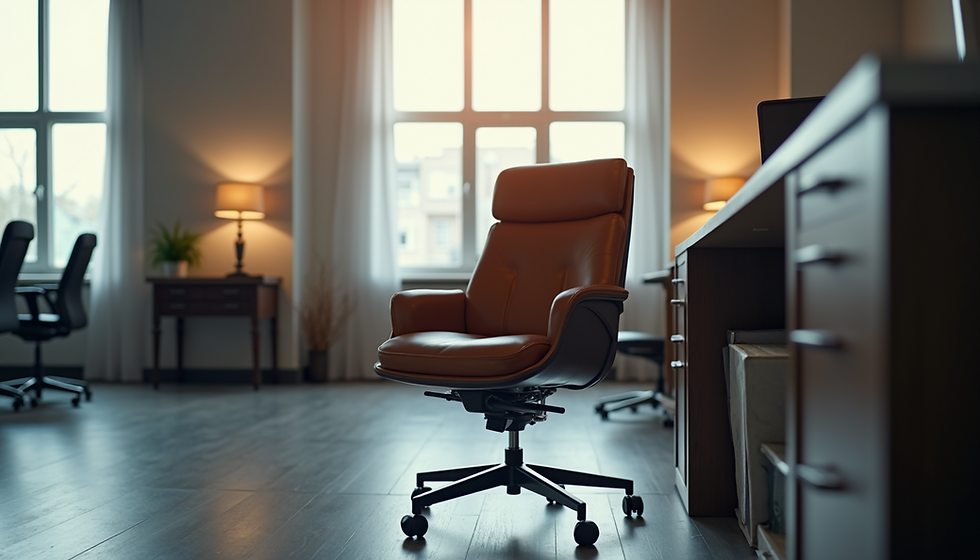How to Select the Ideal Table for Your Meeting Room
- janet650
- Jun 23
- 4 min read
Updated: Jun 25
Choosing the right table for your meeting room is crucial for fostering collaboration, productivity, and comfort. The table acts as the center point for discussion and decision-making, so selecting the perfect one can significantly impact your meetings. In this comprehensive guide, we will walk you through the essential factors to consider when selecting the ideal meeting table.
Understanding Meeting Table Types
When it comes to meeting tables, there are various types designed for different needs. The first step in choosing a suitable table is understanding these types.
Boardroom Tables: These are large, rectangular tables designed for executive meetings. They facilitate face-to-face interactions and usually accommodate 8-20 people.
Collaborative Tables: Circular or oval-shaped tables promote team discussions and idea-sharing. They are perfect for smaller, more interactive meetings that require everyone's input.
Training Tables: These tables are often lightweight and come in various configurations to accommodate a flexible space. They can be arranged in different setups like U-shape or classroom style depending on the meeting purpose.
Height Adjustable Tables: Also known as sit-stand tables, these allow users to alternate between sitting and standing positions during meetings. This option is great for promoting health and reducing fatigue.

Assessing Size and Space
The next consideration is the size of the table in relation to your meeting room. A large table may seem beneficial, but if it overwhelms the space, it can lead to a cramped atmosphere.
Room Dimensions: Measure the dimensions of your room before shopping for a table. Leave enough room around the table for chairs and movement. A good rule of thumb is to allow for at least 3 feet of space around the table.
Table Size vs. Number of Attendees: Consider how many people you typically have in meetings. For instance, a table for eight should be at least 5-6 feet long. Ensure that the table size is adequate for your meeting requirements without crowding the room.
Shape Consideration: The shape can affect both the style and functionality. Rectangular tables fit longer rooms, while round tables are suitable for smaller spaces and encourage inclusiveness.

Choosing the Right Material
Materials significantly impact not only the aesthetics but also the durability and functionality of the table. The main materials used in meeting tables include:
Wood: A classic choice that exudes professionalism and warmth. Wood tables can vary in quality, so look for options made of solid hardwood for durability.
Glass: Glass tables offer a modern look and can make a small space feel larger. However, keep in mind that they require regular cleaning to maintain their pristine appearance.
Laminate: An affordable option that comes in various designs and colors. Laminates are durable and easy to clean, making them a practical choice for busy environments.
Metal: Metal frames or accents provide a contemporary style and added strength, making them an excellent choice for frequently used spaces.
Consider not just the visual aspect but also how the material fits your company's brand and values. If your environment is formal, opt for wood or high-quality laminate; for a more casual vibe, glass or mixed materials could work well.
Facilitating Technology Integration
In today’s digital age, integrating technology into meeting spaces is essential. Ensure that your chosen table accommodates technology seamlessly. Look for tables that feature:
Cable Management Solutions: Tables with built-in cable channels or grommets help to keep cords organized and minimize clutter.
Power Outlets: Some tables come with built-in power outlets or USB ports. This feature allows participants to charge their devices easily during meetings.
Screen Compatibility: Ensure that there’s enough space on the table to accommodate laptops and any additional technology you might use, such as projectors or large screens for presentations.
By choosing a table that accommodates technology, you can enhance productivity and ensure that all members are adequately equipped during meetings.

Assessing Aesthetic and Branding
The table you choose should align with the overall aesthetic and branding of your workplace. Here are some tips to ensure cohesion:
Color Palette: Consider the colors present in your meeting room and company branding. Choose a table color that complements the existing décor.
Style: From contemporary to traditional, the style of the table should reflect your company's identity. For instance, if your company prides itself on innovation, a sleek, modern table could enhance that perception.
Functionality vs. Style: While it's easy to focus solely on aesthetics, ensure that the table is functional and meets your practical needs.
Choosing a table that adheres to your company’s aesthetics not only enhances the atmosphere of your meeting room but also reinforces brand identity.
Making the Final Decision
By now, you should have a clearer picture of what to consider when selecting an ideal meeting table. Here’s a quick recap of the top factors to think about:
Type of Table: Understand the types of tables available to choose the one that fits your needs.
Size and Space: Measure your room and consider the number of attendees to determine the right size.
Material: Select the material that balances durability with your desired aesthetics.
Technology: Ensure the table accommodates necessary technology for a seamless meeting experience.
Aesthetic Appeal: Align the table's design with your company’s branding and overall room décor.
When you consider these factors, choosing the right meeting table for your space becomes an easier task. Explore options such as meeting tables singapore to find the perfect fit for your business.
Overall, remember to prioritize both functionality and comfort. The right meeting table will not only serve its purpose but also enhance the overall experience for everyone involved.







Comments